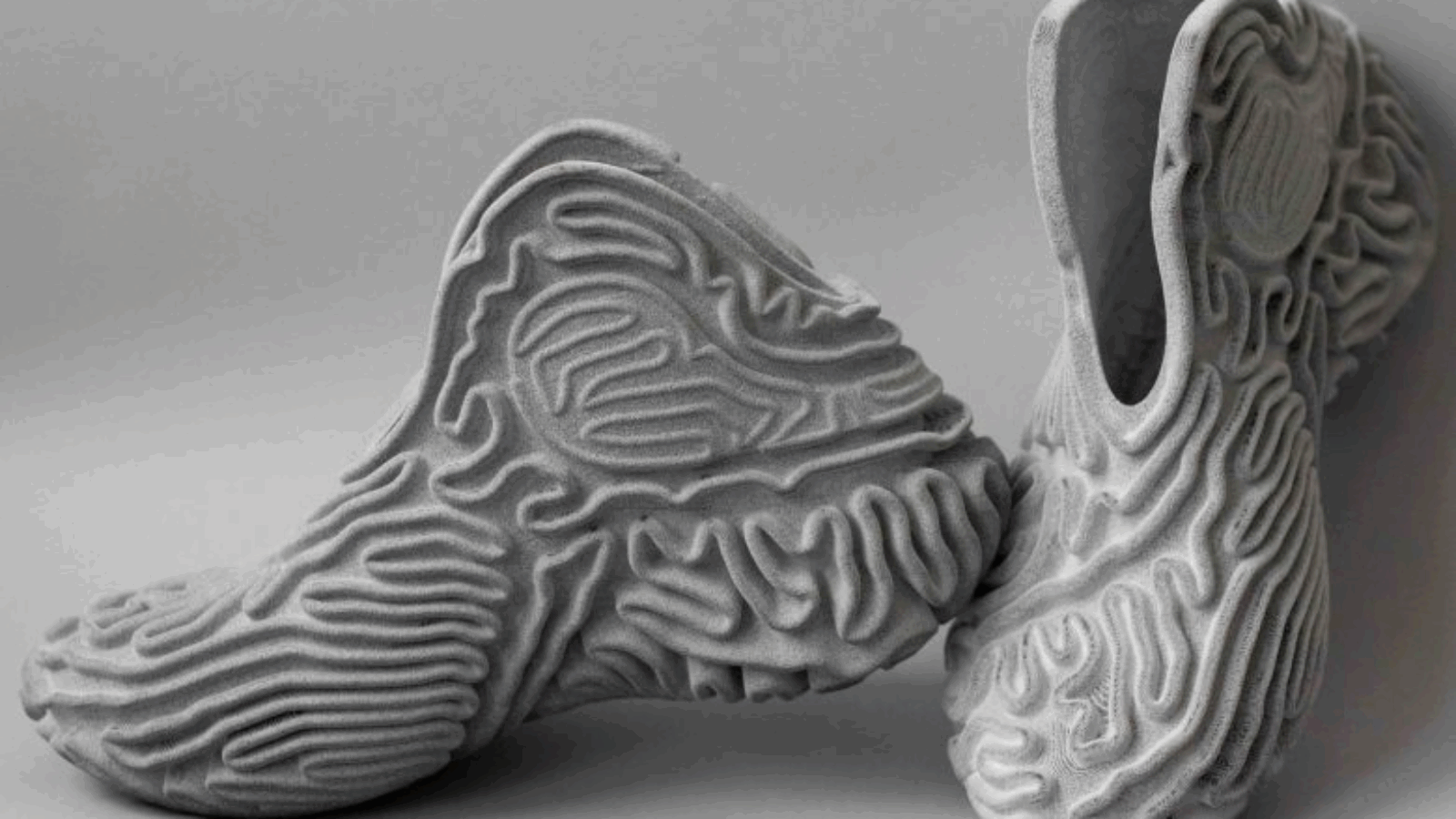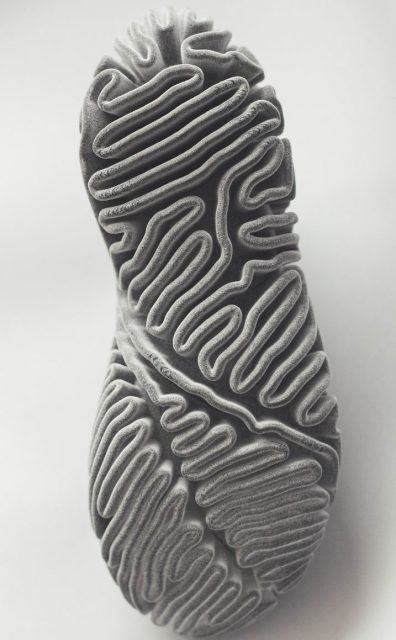In 1827, The Book of English Trades summarized the cobbler’s profession: “There are few trades more useful than that of a shoe-maker, and, perhaps, not many that are more profitable, when it is carried on to a considerable extent.” We have largely forgotten this profession as, two hundred years on, the cobbler has been replaced by mass production. Additive manufacturing, however, promises a return in some ways to the personalized shoe of earlier extraction. Such a return, as with many things relating to AM, makes mechanisms and their operators artisans.
voxeljet is among companies, like Adidas and New Balance, now producing footwear with the help of AM materials and systems. Its newest product is the Coral Runner, an entirely printed sneaker made of thermoplastic polyurethane (TPU). The shoe was designed by Shun Ping Pek, a Singapore shoe designer.
The shoe responds to massive market interest in runners, and more interest besides in customized runners. voxeljet is quick to point up three challenges for the shoe industry to which its product responds:
- Individualization, by which customers emphasize value on customized shoes that are perfectly adapted to their feet and movements for improved comfort and performance;
- Sustainability, with which the market demands more easily recyclable materials; and
- Automation, through which small quantities that once required special tooling or molds, may be affordably produced.
AM, as readers know, addresses these issues with ease, thus making the technology and its users the world’s newest cobblers.
The Coral Runner emphasizes innovation and customizability. Shun Ping Pek was inspired by coral, which builds itself through additive sedimentation. The designer obviously draws this parallel in the shoe’s look; its creation in Voxeljet’s VX200 HSS powder bed system literally recreates coral’s sedimentary process.
“The great advantage of 3D printing is both on-demand manufacturing and the one-to-one transfer of the digital model into a real object,” explains Shun Ping Pek. “While the Coral Runner could theoretically also be manufactured using conventional production techniques such as injection molding, this way would have been very challenging due to the consistent design. The HSS technology offers the ideal solution”.
Manufacturing on Demand
The shoe’s TPU material was sourced from material manufacturer Covestro; the material has been a common part of shoe soles for decades.
The choice of TPU made perfect sense in this case because it can be very soft and elastic or very hard and durable. Voxeljet’s HSS technology, these properties can be influenced in all three dimensions.
This property definition is made possible through so-called grayscale printing. Specific build areas may be dyed more deeply by specifically controlling the volume of the absorber jetted into the powder bed. The more absorber jetted, the stronger the components become. By using industrial inkjet print heads, it is thus possible to print different grey scales within one layer, thus establishing different product properties in each layer.
Hence the return to artisanship and the cobblers who, though relatively fewer in number, still work to customize our shoes. AM allows the sole to be perfectly adapted to an individual’s tread patterns and cushioning requirements.
Like most things artisanal, Voxeljet’s and Shun Ping Pek’s experience with this project involved a steep learning curb. Though the traditional wood- and leather-working of cobbler legend is not represented in this process, the additive challenges open a new view onto customized shoe production.
Evaluating the maximum wall thickness was one of the biggest challenges to ensure sufficient flexibility of the shoe while reducing its weight and the required material. This challenge was, however, quickly overcome through rapid digital adaptation of the design and subsequent 3D printing.
Voxeljet is already working on scaling the HSS process to its VX1000 HSS, a 3D printing system that demonstrates its strengths particularly in the production of larger quantities up to fully automated series production. This system combines the customizability of older forms of shoe production with the mass production models that characterized twentieth-century consumerism. The future may be now, but past examples create exciting prospects for design and manufacturing in this young century.
* This article is reprinted from 3D Printing Media Network. If you are involved in infringement, please contact us to delete it.
Author: Adam Strömbergsson





Leave A Comment